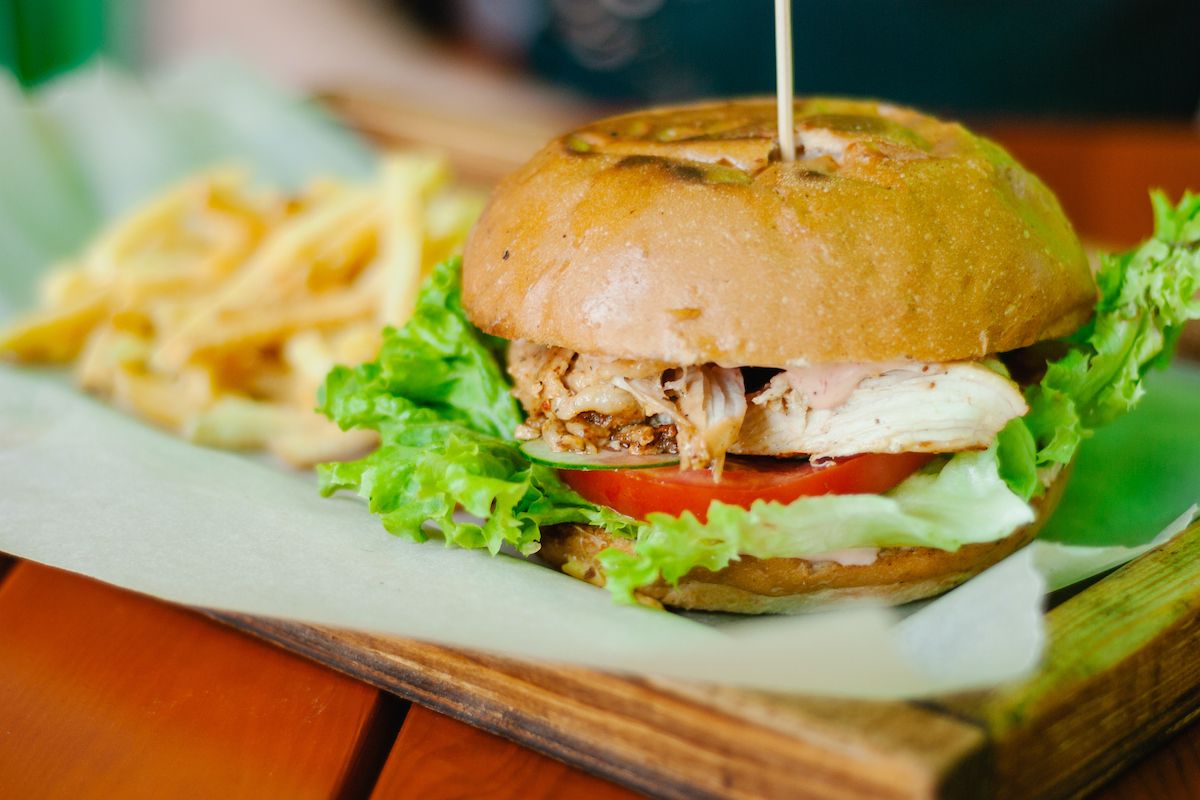Please stop putting so much lettuce on your sandwich

I don’t know if it’s because I grew up among immigrant adults or if reading Dante’s Inferno in high school taught me that there’s an entire circle of hell for the wasteful, but I absolutely dread not finishing a meal. If I come to your house, you serve me dinner, and I don’t finish it all, I will literally think about it for the next 24 hours. It doesn’t even matter if the cooking was bad — I just can’t stand leaving anything on the plate. I am always John Candy in “The Great Outdoors” eating every single piece of steak, even the gristle. That is why I find the overuse of greens on sandwiches to be especially disturbing. If I wanted a salad with my sandwich then I would have ordered one. Instead, I get a sandwich with a pile of leaves on it, and I feel obligated to stuff them all in my mouth.
Getting the feeling that somebody went outside and raked whatever was growing in the garden onto my sandwich is one thing; what’s even worse is the truly disturbing amount of tasteless, worthless shredded iceberg. At this point I’m convinced iceberg is a weed that covers the planet, and perfectly decent sandwich makers just get a steep discount on it, thinking it will add some crispness to the finished product, when all it does is make the sandwich taste wet or dirty, or usually both. The madness, I say, must end.
You’re probably reading this and thinking to yourself that we’re in the middle of a pandemic and maybe I should concern myself with that. To which I say you are absolutely right — but we’re also in the middle of unprecedented food shortages, with a reported 71% of shoppers fearing they’ll go to their local grocery store and find the shelves mostly empty. This is about too much lettuce on the club you ordered at the diner, but it’s also about food waste. It’s about me and countless other people saying “There’s way too much watercress on this roast beef sandwich,” and tossing most of it away. That little bit of watercress, romaine, or radicchio you don’t want between bread adds up and contributes to the 30 to 40% of our food supply that ends up in the trash. It wouldn’t fix the world’s troubles if places started using a little less leafage on sandwiches, but every little bit helps.
Ilene Rosen might be the perfect expert to talk with on this subject. She’s the co-owner of the popular Brooklyn shop R&D Foods, and the James Beard award–winning author of the book “Saladish.” So if anybody understands sandwiches and greens, it’s Rosen.
I’ve been a customer at R&D since the shop opened up in 2014. The coffee is great. Ilene, co-owner Sara Dima, and the staff are always friendly and welcoming, and that alone keeps me coming back. But I live in a part of Brooklyn where good sandwich choices aren’t hard to find. Everything from humble bodega subs to new-school places like Court Street Grocers and Winner and classics like Defonte’s are a short trip from my apartment. I have to really like your place to keep going back, and R&D has me on a steady one sandwich per week rotation because, simply put, they put thought into every ingredient that goes between the bread. Nothing feels like overkill, and nothing murders a sandwich like overkill. As Rosen puts it, “Balance and proportion are everything in sandwiches, as in life.”
Balance is everything. And besides the fact that I just don’t want too much of anything on a sandwich, I find nothing throws things off more than too many greens. It soaks up most of the flavor, and the cheese or the meat, the mustard or mayo, even the other condiments, tend to blend into the lettuce or the sprouts or the spinach or whatever. “Throwing on lettuce or whatever should never be a knee-jerk reaction,” says Rosen. “If I go somewhere to have a sandwich— and I do that a lot, because sandwiches became my pandemic obsession (salads have moved to the back burner) — and I encounter a menu where every sandwich has the same green, I immediately assume I’m in for a bad experience.”
While I understand that sometimes the greens are the main attraction on the salad — like the kale salad sandwich I have ordered many times at R&D, for instance — Rosen says that to make a great sandwich, “Know the roles each item is playing, and the end result sings.” She says that knowing the flavor profile of the green should be no different from the decision to pair a certain kind of meat with a specific cheese. “Choose something that makes sense with the combination of the sandwich, and use it in appropriate proportion.”
The ideal situation for any greens on a sandwich can be found at a place like Frady’s, the colorful food shop in the Bywater section of New Orleans that is always my first stop when I visit. When I get something like a roast beef or oyster po’boy, lettuce is a necessary addition. But since I like my sandwich loaded up, I tell them: “Not too much lettuce.” As I stood watching them make my lunch the last time I was at Frady’s, the guy behind the counter asked if what he put on was a good amount for me. “I just want you to enjoy your sandwich,” he said. I appreciated that.
Obviously not every sandwich situation is going to be like the one at Frady’s, and I don’t feel the need to be controlling and obsessive about my order like I’m Meg Ryan in “When Harry Met Sally.” I do say “Not too much lettuce” as a way of combating being wasteful. But I’m one person and can only order so many sandwiches. My hope is that every sandwich creator out there, both professional and amateur, heeds the words of Rosen and appreciates the fact that while every ingredient is important, the greens need to play a minor role when placed between two slices.



